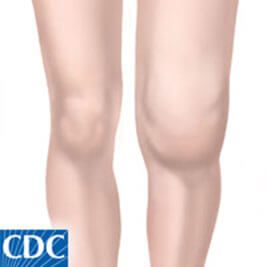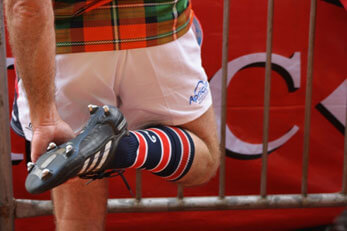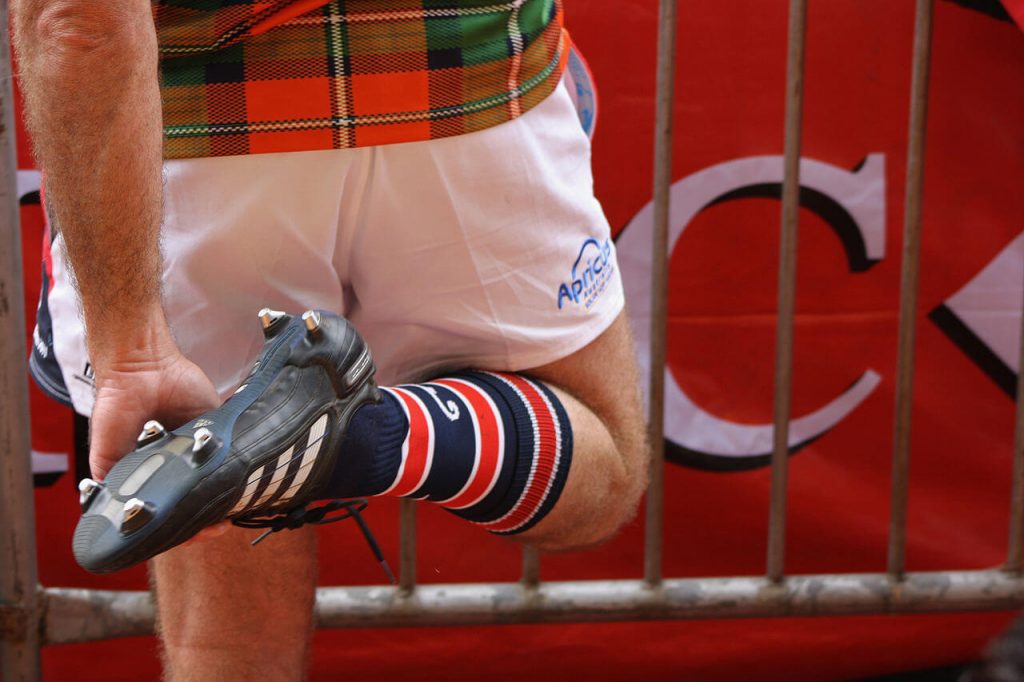What do we do With a Clicky Knee- Another Look at a Patellofemoral Pain Syndrome
Patellofemoral pain syndrome, is one of the most common causes of a mildly swollen knee and is is also a very common cause of a clicky knee during exercise. It’s often responsible for pain at the front of your knee during running, squatting and other bending activities. It’s not an uncommon problem but it still presents a clinical challenge. Fortunately though, late last year we saw some improvements in deciding what might work for our poor patients suffering with this problem.

By Centers for Disease Control and Prevention (NIH) (Centers for Disease Control and Prevention (NIH)) [Public domain], via Wikimedia Commons.jpg
What is this thing?
Patellofemoral pain occurs when your knee cap (Patella) rubs your thigh bone (Femur) too closely during normal movement. Obviously your knee cap has to slide up and down as you move your leg. This is a good thing. It gives you a mechanical advantage when you’re trying to generate force at the knee. But the too closely bit is the worry.
If your leg is over rotated it might twist into a position where your knee cap is against it, or if your quads are a little too lax they might let the knee cap drift a little too close to the thigh bone. When they get up close and personal like this then they grate on each other. And, you get that bone on bone pain that can be so difficult to ignore, along with the clicks and pops your knee cap makes as it grates along the groove it used to glide so smoothly over.

By The original uploader was Vesperholly at English Wikipedia (Transferred from en.wikipedia to Commons) [CC BY-SA 2.5 (http///creativecommonsorg/licenses/by-sa/2.5)] via Wikimedia Commons.jpg
How do we pick Patellofemoral Pain Syndrome?
There’s no one test we can perform in the clinic to absolutely confirm this sort of grind either way. It’s mostly a case of working out what it isn’t. We have to have a good chat first to make sure the really scary stuff like cancer is unlikely, the more worrisome stuff like arthritis isn’t an issue and the really difficult and annoying things like tears and fractures haven’t happened. Kids especially get their own little host of problems that can occur with too much sport or developmental differences. But if we decide nothing else is going on, the pain is in the right spot, it gets worse with things like going up staircases and down into a squat we might decide we’re looking at a case of patellofemoral pain.
After that, we test the knee, we see what it can do, what positions hurt and what relieves it. If this all adds up this is good we can start treating the patellofemoral pain. If all still doesn’t go to plan then maybe we’ll get an MRI to exclude the nasty stuff.
What works for Patellofemoral Pain Syndrome?
These things rarely go to surgery these days mainly because it’s a touch and go proposition. Most of them will respond to a bit of work in the clinic. Hammy stretches often fix you up. Exercises and tape can help to support the patella. And, a foot orthotic might be enough to align your entire leg and take the pressure off. There is even science to support the idea of a chiropractic adjustment to the pelvis.
The NEW STUFF is a lot of good rules for deciding when to apply which treatment.
Taping it
Tape seems to help some people by physically dragging the patella away from the femur as you move. This is one area where an x-ray actually helps! If you can demonstrate a big angle between the way the patella is rotated against the femur as it tracks down its groove then we can say with some confidence that using the tape to drag it back into place, or unrotate it, is pretty handy. Unfortunately it’s probably an area where most radiologists aren’t routinely looking for this sort of a thing. So, you might see a bit of head scratching down at your local clinic.
Exercising it
Exercises probably work like tape does, but they get your muscles to pull that patella back into place. It’s recently been proven that a CT scan showing a bad knee cap position might dictate whether exercise will work for you. In practice though, a CT scan of your knee cap will likely cost $200. So, it’s probably a good idea to just get strengthening up those quads.
Inserts or orthotic
If we look at you and can simply eyeball that your fore foot is rotating or that your arch has dropped away, standing still, walking or even jumping then a fitted orthotic might just be what you need. It will straighten out the angles and take the pressure off that upset patellofemoral joint. I like this approach as we don’t need to send away for fancy images to folks who may or may not know exactly what we’re looking for.
If we find one of these problems then we’ll send you down the road to a podiatrist who knows about these kinds of things. You’ll have a better than even chance of getting it right that way. An area I’d like to see more closely examined is whether exercises to strengthen up this sort of foot drop might be just as good an arch support/brace. I suspect they would be but hopefully someone will prove it soon.
Flossing the Nerve
When you tear something you get scar tissue and scar tissue is sticky, it grabs on like a clingy ex and it doesn’t let go easy. If you’re unlucky enough to have a scar grab onto your femoral nerve it might alter the way you move your femur and then you get the rest of the symptoms. Specific nerve stretching tests can help a skilled practitioner identify if this is the case. Then, a nerve ‘flossing’ technique can be aimed at freeing up your stuck femoral nerve. This has the advantage of not needing a large white envelope full of expensive images. Further, the flossing is pretty easy to teach for home work.

By istolethetv from Hong Kong, China (cleat Uploaded by Fæ) [CC BY 2.0 (http///creativecommons.org/licenses/by/2.0)], via Wikimedia Commons
Adjusting the pelvis
Now this one is a little wilder but it seems that if we can find a sore pelvic joint and adjust it then the muscles that surround your joint might just activate a little faster and pull a little stronger. Why you ask? Well if you’ve ever sprained your ankle you’ve probably noticed that you don’t run so fast the next day. Your brain just will not let you put the same force through it. And, you’ll be pretty hesitant to even put any weight on it.
If you’ve got even a mild sprain or strain in a pelvic ligament then it’s likely you’ll be a little slower and a little weaker when you go to move the muscles around your hip. Your hammies and your quads are pretty big muscles. They both span the length of your hip and knee. So, these are the muscles we’re probably looking to for this effect. If your quads aren’t working as fast or forcefully then the patella could suffer for it.
So what’s the take away?
Well first is that we have a lot more to learn about patellofemoral pain syndrome, we have to acknowledge we’re working with a lot of grey areas. There is a lot going on even if you’re only looking at the front of the knee and it’s important to make sure you know what it’s not.
You can try some passive things like taping or arch support, but ideally we’d like the muscles to do the job they’re paid for. A bit of a nerve stretch or back adjustment might work if we’re picking up the right signs. Lastly if it all doesn’t go right then you probably need an MRI to rule out the nasties, reassure you that you’re on the right track, and that you need to stick at the rehab.
The author of this article is Dr. Michael O’Doherty, from Chiropractic Moves.

Hi, I’m Michael; Chiropractor, Dad, science enthusiast, active weightlifter and keen sportsman. I work with busy and active people who are struggling with pain to find relief from their symptoms so that they can return to an active lifestyle, get through their work day and their workouts without having to pop a pill so that they can feel happier and healthier in their body.

